 FAQs answered about BlackGround, including an analogy with the game of Baseball.Monday 31 October, 2022
Dear esteemed Customers, Since our last Newsletter we received quite a lot of questions. Thank you for your interest! Here we address several FAQs about the Blackbody v.2 and the new BlackGround interface. Q: Describe for me please the aural effects I can expect when using the Blackbody v.2.In general the Blackbody, when placed correctly, imparts a feeling of smoothness and calm, "flow," if you will, and also greater detail. This detail is not of the sort where pixelation is more pronounced, but of the sort where your listening "microscope" has a new depth of zoom factor. Another analogy: without the Blackbody, you look up at the night sky but it is somewhat hazy with a washed out backdrop due to the light pollution in your town. With the Blackbody, you are transported to a rural environment far away from the metropolis, again looking up at the night sky, now seeing so many more stars you were once oblivious to. What before was perceived as a hazy backdrop is now darker with more distinct stars of a far deeper cosmos. Q: Can you tell me more about proper placement?You don't need to worry about exactly where to place the Blackbodies. Far more more influential is that you follow the correct angle and directional setup requirements to get the best results. Assuming you are in the Northern hemisphere, your proper Blackbody orientation will be towards the North. Think of it this way. Imagine you want to place a small mirror such that the Sun sees its own reflection. From the vantage point of the sun, the Earth is seen basically as a dot. Do you think it even matters to energy radiating down on your system's room exactly where you place that mirror? Not at all. But at what angle you place that mirror is going to be far more influential. The reflection angle is what counts here, not where that reflection exactly takes place. (Here I used the Sun as an example, but of course anyone who has read the Blackbody v.2 discourse, and has watched the videos we point to there, knows that it is the Earth's magnetic field influencing the directional stream of cosmic radiation that dictates the local angle and direction we need to use.) You can put them on top of speakers, on shelves of your rack, or even upon gear lids. But like I say, it really is less important where you place them. What is far more important to consider is the proper angle and direction. Even placing them on the floor works very well, provided you heed the proper angle and direction. You will choose your custom angle stand, provided free of additional charge, using the simple tool we prepared for you on our web shop. It's easy to do by simply locating your house on the interactive map provided. The tool then spits out the proper angle required for that location, and when you then order, we will custom manufacture you the stands using that given angle. Q: What grounding wire should I use? Any pointers here?You can ground using any wire. You will probably see that the Blackbody v.2 will be somewhat less stable using solid core wire simply because solid core wire's stiffness can act like "coat hanger wire." You might inadvertently "yank" the Blackbody, altering the direction you initially aimed it at. You might want to tape your wire down to provide some amount of tension release for the electrical connection to the Blackbody. This way, if you mess with some wires behind your system (who eventually doesn't?), you won't accidentally move the Blackbody. Our C-MARC™ wire is flexible and lightweight, but even so, this can be an issue in a finely set up situation. Especially if someone goes in to clean! Q: Are the effects measurable?There was much work put into the development of this seemingly 'crazy' little device. Even though the critical ear has guided us well, we remain highly curious about possible measurement. We have already gathered some equipment to, in near future, try to investigate and perhaps even measure(!) muon radiation patterns around the Blackbody. We'll see what becomes of this. Many recent advances in this field have made it possible for us to entertain this type of experimentation. Even just a few years ago this type of thing would have been unthinkable. Q: How about burn-in? Does it work like an 'on/off' switch, or is it more of a 'ramp-in' experience we know from cable swaps?As mentioned above, the Blackbody focusses the sound, gives better clarity and reveals much new detail, but does so not merely as a simple "on/off' switch when you introduce it or take it out. It goes more like this: put it in, get ~80% of the result right away. Wait a while (maybe half a day), and you gradually get the remaining ~20% performance. Now, take it out, lose ~80% of the performance, but retain about 20% for a while (this is kind of spooky at first - why should this happen?). After some time, the remaining ~20% effect fades out fully, and one is left again with the usual haze over the sound. This undoubtedly has a serious explanation. Let's indulge in some guesswork here. Think about the daily heat cycle of the sun's radiation and the ground. During the day, asphalt heats up, but when the sun sets, you can still feel the warmth radiating from the asphalt for quite a long while. Early in the morning, before sunrise, it is coldest. It heats up pretty slowly during the day, such that only after several hours of direct sunlight does the heat radiation from the sun add up and the asphalt reaches its hottest. Because of this cumulative effect, the surface temperature of asphalt only reaches its highest long after the sun has passed that day's zenith. On a hot summer day this can actually be just prior to sunset. At dusk, and quite a long time afterwards, you can still feel that day's heat still radiating off the asphalt, even when there is little or no light left from the setting sun. Move over to a grassy area and suddenly you feel how much quicker the bare earth and vegetation gets cold. The same thing applies in the morning, only in reverse. As the sun rises, the asphalt is still cold and only heats up gradually. In terms of the asphalt's radiating heat, it definitely is not its hottest when the sun is directly overhead. This analogy might apply, on a lower level, to cosmic radiation and the gear's interaction with it. Imparted muon (or other high energy particle) radiation onto gear may, on some level, elicit a delayed effect response similar to how asphalt does with regards to sunlight every day and evening. This might serve to explain some aspect of the delayed response in sonic performance mentioned above. This is our best analogous guess as to why this ramp-in and ramp-out effect displays itself when experiencing the use of the Blackbody in a system. Q: Does it matter how I run my grounding cables?It doesn't matter how you run the grounding cables from the Blackbodies. Let's say you have a string of 7 inter-grounded Blackbodies, and have one last grounding cable make contact with the building's ground. In an adjacent room you have some other equipment, and you have over there 3 additional Blackbodies with their own ground string of connections, again with one last one making contact with building's ground. If you run the grounds together through a hole in the wall and ground them all into a single outlet, the results will be the same. Likewise, if you had all 10 Blackbodies each separately grounded to 10 separate wall outlets, the results would be the same. Q: What about in conjunction with the BlackGround device?Now, the interesting thing. Introducing the new BlackGround device between the Blackbody and the ground of the building, the results are far better. Soon we will share a series of connection schematics which will explain exactly how to ramp up performance using one, or multiple, BlackGround devices. This will require a separate Newsletter as there is much to say and show. Q: How does the Firewall 640x and Firewall for Loudspeakers compare to the new BlackGround device?One should consider the Firewall 640x (and Firewall for Loudspeakers) as current conditioners, since the currents in question in fact flow right through the conditioner. The new BlackGround interface, however, is a voltage conditioner, since no currents flow through the device. Instead, with the BlackGround, we tap the existing voltage at each signal conductor (regardless of whether it is AC or DC, positive (send) or negative (return), or Blackbody ground). This real-time voltage, regardless of what it is, is routed to the BlackGround device on one terminal. The other terminal marked with the ground symbol is connected to the ground voltage of the building; this is really the ground potential of the Earth itself, because the building's ground is a physical conductive stake in the ground. Q: Why? What's the point here?High energy particles traverse space at near light speed. The highest energy subatomic particle observed scientifically (so far) was named the OMG particle. "...equivalent to a 142-gram (5 oz) baseball travelling at about 28 m/s (100 km/h; 63 mph)." We are surrounded by layers of protection. The first of these is the Sun's magnetic field. The field does this shielding (actually, bending) for the highest, most deadly, energetic cosmic particles. The Earth's magnetic field is yet another layer of protection. The Earth's magnetic field bends remaining ionic radiation towards the poles. But some still gets through, and at this point we already know its statistically most likely angle and direction given our location on the crust of the Earth. Muons and other subatomic particles constantly travel directly through buildings, ground, even our own bodies. This radiation is everywhere. If we can’t adequately shield ourselves from this inevitable cosmic influence, and we can’t dig an audiophile’s protection cave several kilometres underground in granite, we can at least seek ways to, in a way, "raise" the desirable features of the Earth's protection and implement them in an elegant, concerted way, directly at the signal's existing potential level instead of at the EM surroundings level, which for cosmic particles is simply inconsequential. You can shield all you want using traditional means, to no avail. Lightning rods operate by raising the ground potential up to their ionising tip, making it far more likely for lightning to strike them rather than nearby rooftops or other exposed raised structures such as power stations. The following analogy with Baseball will serve (ha!) to explain. Baseball analogy: The baseball is the cosmic charged particle. The pitcher is the source of the cosmic particle (supernova or whatever) [1.] and the batter is the cosmos which flings the particle in question out towards the Earth [2.]. The catcher out in the field is the Blackbody, aimed at the proper angle and direction, ready to catch. [3.] Through a grounding wire he throws the impulse as quickly as he can to the baseman. The baseman represents the BlackGround signal-ground interface. [4.] He catches the throw with his glove, and with his shoe, stands on the base (ground potential) without actually physically tagging the runner (no electrical contact is made) [5.]. This represents the score's neutralisation. Particle is dealt with. Team Cosmic, you're out! The cheer from the stands of our team, team Sonic, can be heard for miles. Regards, Louis Motek | LessLoss.com |
- Products
- Power Cables
-
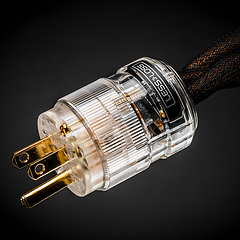 C-MARC™ Prime
The must have foundation for any sound system today.
From
$
486
C-MARC™ Prime
The must have foundation for any sound system today.
From
$
486
-
 C-MARC™ Classic
The unique super-cable power cord everyone's talking about.
From
$
1148
C-MARC™ Classic
The unique super-cable power cord everyone's talking about.
From
$
1148
-
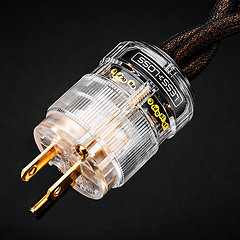 C-MARC™ Classic Entropic Process
The peerless, advanced Classic masterpiece.
From
$
1934
C-MARC™ Classic Entropic Process
The peerless, advanced Classic masterpiece.
From
$
1934
-
 C-MARC™ Stellar Entropic Process
The crown jewel for highest performance power connection.
From
$
2450
C-MARC™ Stellar Entropic Process
The crown jewel for highest performance power connection.
From
$
2450
-
- Loudspeaker Cables
- Interconnect Cables
-
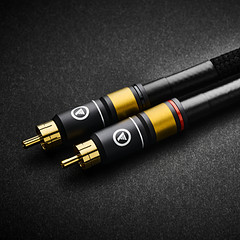 RCA C-MARC™
Cotton-clad true Litz • Whopping 2.3mm2 polarities
From
$
850
RCA C-MARC™
Cotton-clad true Litz • Whopping 2.3mm2 polarities
From
$
850
-
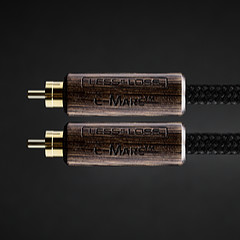 RCA C-MARC™ Entropic Process
Our finest RCA cable • Polished Wenge barrels
From
$
1428
RCA C-MARC™ Entropic Process
Our finest RCA cable • Polished Wenge barrels
From
$
1428
-
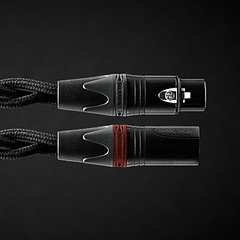 XLR C-MARC™
A hand-braided cotton-clad unique Litz construction
From
$
950
XLR C-MARC™
A hand-braided cotton-clad unique Litz construction
From
$
950
-
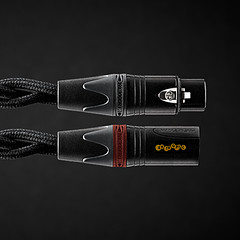 XLR C-MARC™ Entropic Process
Stratospheric performance for the audio connoisseur
From
$
1615
XLR C-MARC™ Entropic Process
Stratospheric performance for the audio connoisseur
From
$
1615
-
- Digital Cables
-
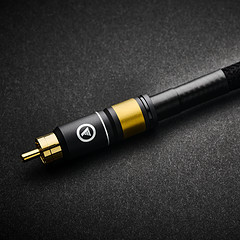 RCA Digital C-MARC™
Cotton-clad unique Litz design • Made only by LessLoss
From
$
510
RCA Digital C-MARC™
Cotton-clad unique Litz design • Made only by LessLoss
From
$
510
-
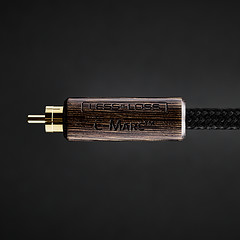 RCA Digital C-MARC™ Entropic Process
Possibly the most subtle digital cable on the planet
From
$
858
RCA Digital C-MARC™ Entropic Process
Possibly the most subtle digital cable on the planet
From
$
858
-
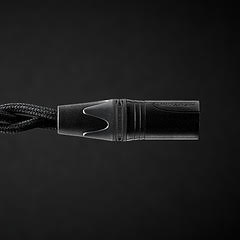 XLR Digital C-MARC™
Featuring a whopping 3 x 2.3mm2 Litz construction
From
$
570
XLR Digital C-MARC™
Featuring a whopping 3 x 2.3mm2 Litz construction
From
$
570
-
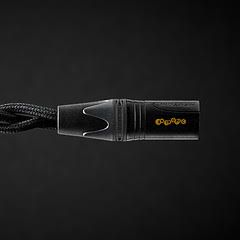 XLR Digital C-MARC™ Entropic Process
Stratospheric performance for the audio connoisseur
From
$
969
XLR Digital C-MARC™ Entropic Process
Stratospheric performance for the audio connoisseur
From
$
969
-
- Grounding Cables
- Bulk Wire and Cable
- Signal Conditioners
-
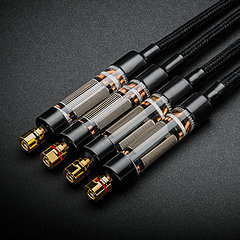 Firewall for Loudspeakers
Firewall for Loudspeakers
C-MARC™ Plug-and-Play Speaker signal conditioning like you've never imagined From $ 1656 -
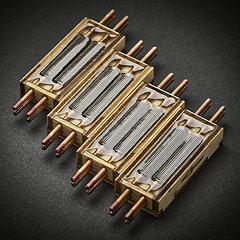 Firewall for Loudspeakers
Firewall for Loudspeakers
DIY version for Self-Installation For the Do-It-Yourself project enthusiast • Solder yourself From $ 800 -
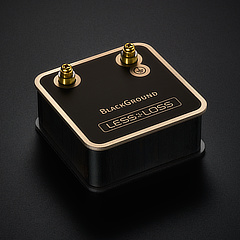 BlackGround DIY
Voltage-ground interface for a variety of applications
From
$
446
BlackGround DIY
Voltage-ground interface for a variety of applications
From
$
446
-
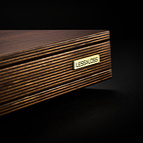 BlackGround 8x/10x Speaker Base
Plug-and-play loudspeaker signal conditioner
From
$
3096
BlackGround 8x/10x Speaker Base
Plug-and-play loudspeaker signal conditioner
From
$
3096
-
- Power Conditioners
-
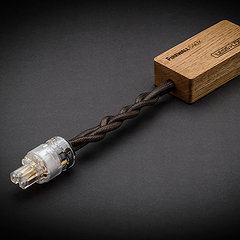 Firewall 640x
Plug-and-play solution for any powered gear
Firewall 640x
Plug-and-play solution for any powered gear
C-MARC™ Entropic Process and standard lead versions From $ 654 -
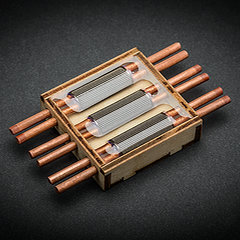 Firewall 640x DIY for Self-Installation
Self-solder and save!
From
$
320
Firewall 640x DIY for Self-Installation
Self-solder and save!
From
$
320
-
 BlackGround DIY
Voltage-ground interface for a variety of applications
From
$
446
BlackGround DIY
Voltage-ground interface for a variety of applications
From
$
446
-
 BlackGround 6x/10x Power Base
Plug-and-play power conditioner
From
$
2350
BlackGround 6x/10x Power Base
Plug-and-play power conditioner
From
$
2350
-
- Power Distributors
- Equipment Feet
- Field Conditioner
- DACs
- Power Cables
- Reviews
- This is definitely the cable to go for. It will almost literally blow your mind. – March 2012, Puresound Magazine
-
I was intrigued by the unanimously positive reviews garnered by these products ...
– by user Raymond Eye
Leaves you speechless
Sensational cables
BEST purchase I've made
Top notch performance
It's a steal
Musical... liquid... 3D
It's not subtle
More than an upgrade
Best I've heard so far
Stellar service
Sounds like a new system
Much more lifelike
Emotional flow
Overwhelming results
More dimensional
Sound is transformative
We were all astounded
Transformed my listening
Sounds so cohesive
Emotionally engaging
- Where to Start
- Free Newsletter
- Newsletter Archive
- B-Stock Alerts
- Shopping Tools
-
Shipping
- Free Shipping Learn about our international shipping policy
-
Return Options
Our satisfaction guarantee
and return policy -
Customs / Tax
UPS expedites local
customs clearance
-
Transaction
- Conditions of Sale Agreement for a smooth business transaction
- Privacy Policy We pledge to keep your information private
-
Terms of Use
Business policies
and agreements
-
Account
-
- Contact Us
-
Meet the Designers
-
- Care to share of your personal experience with our products? We'd be happy to post it!
- Want to learn more about our activities? Our Newsletter is both free and spam-free.
hi-res photos, brochures
logos, press releases, and
print-friendly PDF downloads. -
Contact Us
Connect with Us
-
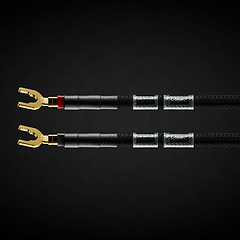
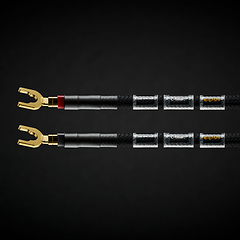
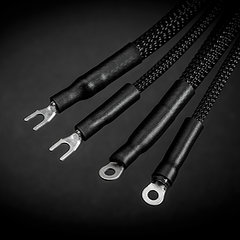
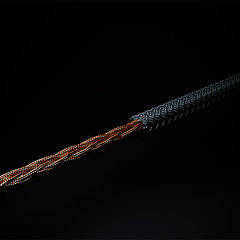
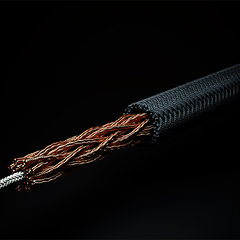
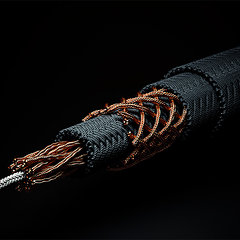
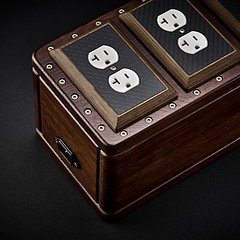
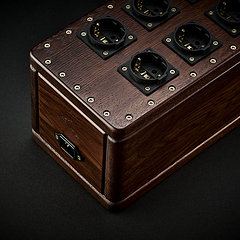

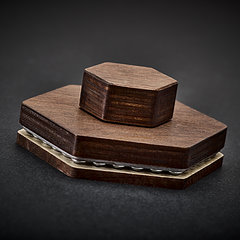
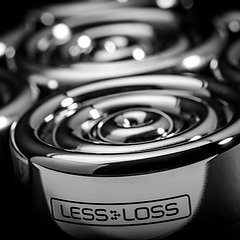
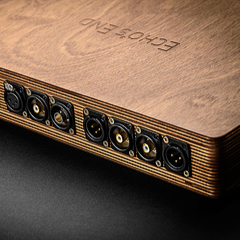
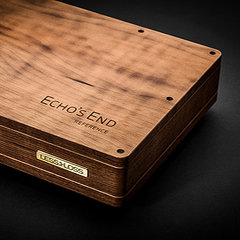
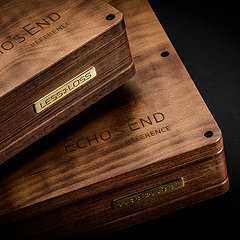
 Beware of Fakes
Beware of Fakes




